Agriculture
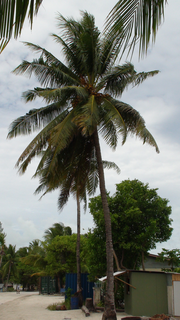
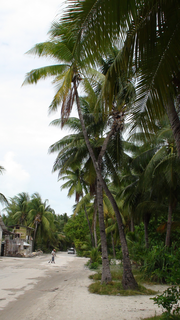
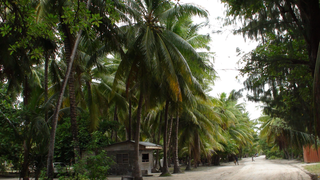
Coconut
Coconut is the most abundant plant in Kiribati
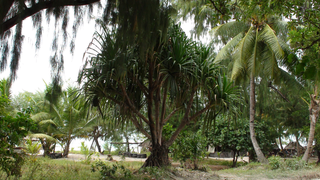


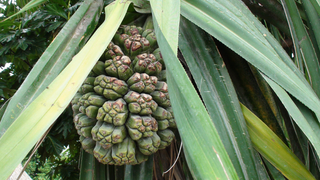
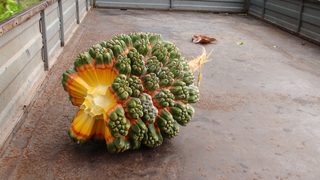
Pandanus
Pandanus is used for plaited ware, construction materials, medicines, decorations, parcelisation, perfumes, and other uses
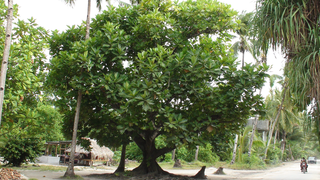
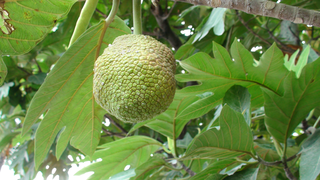
Breadfruit
Breadfruit is a nutritious starchy, energy food and a good source of complex carbohydrates
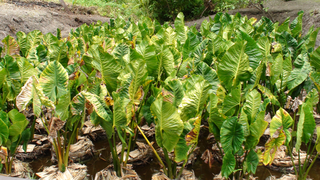
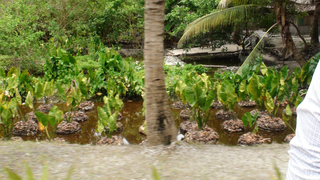
Giant Swamp Taro
It is an important source of carbohydrates and rich in nutrients, especially calcium
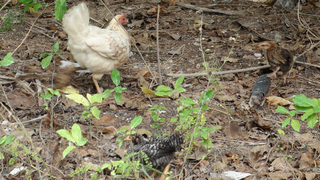
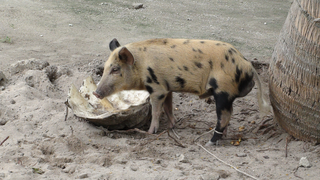
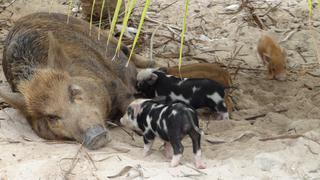
Pigs and Poultry
Pigs and chickens are on free range or extensive system of production
Most of the working population is involved in subsistence agriculture.
Lack of land, frequent droughts and infertile soil prevent large-scale agriculture.
Most of the food needed is imported from overseas because agricultural production in Kiribati is very low.
Agricultural production is constrained by inherently poor soil conditions, lack of surface water sources, land tenure and the geographical scattered nature of the islands.
Breadfruit or te mai (Artocarpus altilis), the giant swamp taro or te bwabwai (Cyrtosperma chamissonis), native fig or te bero (Ficus tinctoria), pandanus or te kaina (Pandanus tectorius) and coconut or te ben (Cocos nucifera) are the main food crops of Kiribati.
Since the 1970s, food imports such as corned beef, flour, sugar and rice have become popular.
Most families keep livestock using subsistence production systems. They are mostly used for fulfilling social obligations at times of births, marriages, deaths and times of festivities and ceremonies.
Food Shortages
In 2004 Kiribati experienced a major food shortage of starchy foods such as rice and flour when a container vessel missed the schedule to deliver food from Australia.
The country was without rice and flour for more than a month.
Kiribati people eat starchy products with their fish.
They were forced to consumed other starchy products such as biscuits, wheat-bix, noodles and sweet biscuits because the period coincided with the off-season of breadfruit production in Kiribati.
People in the outer islands were more fortunate because they had coconuts and other alternatives like the local fig and giant swamp taro.
Food Security
Food security is an issue for Kiribati.
- a vast array of abiotic and biotic stresses threatening to disrupt production
- infrastructure constraints
- competition from nutritionally poor imported products
- nutritionally poor imported products leading to poor health
- limited human resources
- limited genetic diversity
Changing Diet
Many people in Kiribati, especially the younger generations, are forsaking breadfruit in favour of processed, imported, less nutritious food such as rice, flour and noodles.
This is partly because women usually prepare the food and prefer to cook processed imported food stuffs (such as rice, flour and noodles) because they are easier and faster to cook and often cheaper than breadfruit.
The availability of breadfruit (especially within urban areas) is often scarce and not consistent due to a widespread lack of proper infrastructure to facilitate its trade within the islands or between islands.
The abandonment of the traditional diet is a cause of the high number of diabetes, obesity and heart diseases cases in Kiribati.
Local authorities are often supporting health education activities in which traditional food crops like breadfruit, bwabwai and bero are promoted to be consumed rather than the less nutritious, imported food.
Soils
The soils of Kiribati are young, shallow, alkaline, coarse textured and composed of mainly calcium carbonate.
Because the soils are young they are similar to the original coral limestone parent material and have high calcium carbonate levels and little organic material.
Potassium levels are often extremely low.
The soils have very high pH values of 8.2 – 8.9.
The soils are very highly permeable and have a low moisture retaining capacity.
Trace elements such as iron, manganese, copper and zinc are unavailable to plants.
Water and Drought
Kiribati is located in the dry belt of the equatorial oceanic climate zone.
The mean daily temperature ranges from 26 to 32 degrees celsius.
Rainfall is extremely variable both annually and between islands. The islands to the South tend to be the driest with an average annual rainfall of about 1,000 mm. While the Northern islands tend to be the wettest and have an average annual rainfall of 3,000 – 4,000mm.
Underground water is the only source of water besides rain and is often prone to salinity due to droughts which are common.
Coconut
The dominant species in the vegetation of Kiribati is the coconut palm (Cocos nucifera). It has been estimated that coconut occupies 80% of the land area of Kiribati.
Toddy (karewe), produced from coconut palms, is a dietary staple for most Kiribati households, especially in times of severe drought when palms produce few fruit. Fresh toddy is drunk daily by most Kiribati people.
For toddy production the flower spathes of selected trees are cut and bound and tapped twice a day, morning and afternoon, yielding approximately two coconut shells of liquid per day.
Toddy is also fermented to make a vitamin B-rich alcoholic drink. It can also be made into a boiled-down syrup which can be kept without fermenting and a solid caramelised form.
Toddy is particularly rich in energy and vitamin C and has significant amounts of vitamin B and iron.
In rural areas coconut flesh is the major source of dietary fat and a major source of calories and is prepared and consumed in countless ways. It also contains iron, fibre and other nutrients.
Coconut is also important as it produces copra which provides the cash to purchase other food.
In addition to its critical dietary importance, the coconut palm is used in a myriad of other ways to produce products of economic and cultural importance.
Pandanus
The pandanus is one of the most important tree of Kiribati agroforestry systems.
Pandanus will grow in very poor or thin soils and can be found growing almost anywhere on atoll islets.
Because pandanus propagated from seeds will rarely reproduce desired characteristics, almost all planted pandanus are started from cuttings, ideally cuttings which already bear the beginnings of adventitious roots.
The fruit of pandanus is a very important part of the Kiribati diet. The fleshy parts or drupes of the ripe fruits are consumed raw as well as being included in other dishes in a variety of ways.
The tree also provides raw material for a wide range of plaited ware, construction materials, medicines, decorations, parcelisation, perfumes, and other uses.
Pandanus leaves are used in the production of thatching, roofing, mats, hats, sails (in the past), cigarette wrappings, food wrappers, caulking material and baskets for babai compost.
The trunk and adventitious roots are used in house and general construction.
It is also the I-Kiribati ancestral tree from which, according to mythology, the progenitors of the I-Kiribati came.
Breadfruit
Breadfruit trees grow to a height of about 26 meters. It is one of the highest-yielding food plants and a single tree can produce up to 200 or more grapefruit-sized fruits per season.
Breadfruit has good potential for meeting the food security needs of this country because of its rapid ability to regenerate quickly after bad weather events such as bad droughts.
As well as this, it has abundant fruits when in season compared to other traditional crops such as te bwabwai, te bero and te ben.
Breadfruit is a nutritious starchy, energy food and a good source of complex carbohydrates. It is also rich in vitamins and minerals.
Giant Swamp Taro
The plant may reach heights of 4–5 metres and has large leaves and roots. It is a slow growing crop and can take up to 15 years to mature.
Giant swamp taro is grown in pits dug to the water table with various forms of compost added. The pits vary in size from a few square metres to a quarter of a hectare or more.
Cultivation is difficult and time consuming. It needs to be tended constantly but despite the best efforts of the farmers salt water intrusion into the water table often kills the plants. The plant does not thrive in brackish water because it rots the roots, turns the leaves yellow and stunts the plant's growth.
It is an important source of carbohydrates and rich in nutrients, especially calcium.
The main pest is the taro beetle but it is relatively resistant to disease and pests.
The corm can reach weights of 80 kg or more and is starchy. It is cream or pink in colour with a taste similar to sweet potato but with a drier in texture. The roots need to be cooked for hours to reduce toxicity in the corms.
It may be field stored in the ground for very long periods – up to 30 years or more. The cooked corms can be dried in the sun and stored for later use. Traditionally it has been an important emergency crop in times of natural disaster and food scarcity.
Native Fig
The fruits are small and picked when ripe and sometimes when green, cooked, crushed in a pestle into a puree which can be eaten after being sweetened with toddy molasses or sugar and grated coconut.
Livestock and Poultry
The small size of Kiribati does not allow for any large scale ruminant livestock production.
The few livestock kept are largely under the subsistence production system.
Pigs and poultry are on free range or extensive system of production.
There is no commercial production of cattle, goats or sheep.
Care is needed in raising livestock because of their destructiveness to young coconut seedlings and babai and because of the risk of polluting the freshwater lenses under the atolls.
Culture
In Kiribati there is a tradition of interdependence of villagers and responsibility to the clan. This insures that no one goes hungry.
Most families keep pigs or chickens for special feast days or as gifts to others.
The hardy coconut, breadfruit and pandanus tree are among the only things that grow well on atolls and dominate the horizon when you view the islands at a distance.
Giant Swamp Taro is considered essential for everyday meals as well as for feasts and are grown in deep pits that reach down to the fresh water lens. These pits belong to a family clan.
